7 Highest Peaks in North America Climbers Should Know (2024)
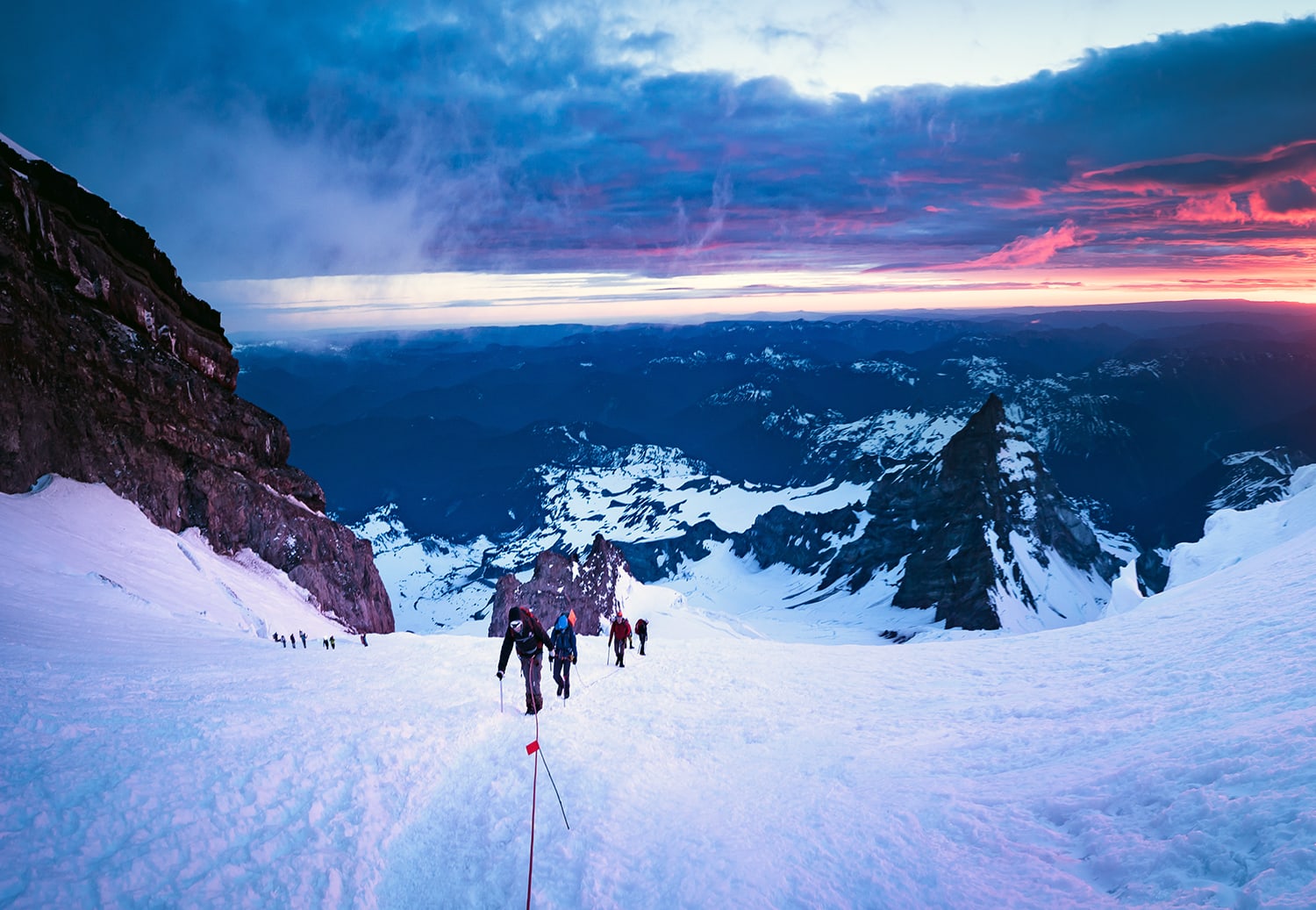
Published on: 09/15/2023
What are the highest peaks in North America? Why should you care? Sure, not all climbing revolves around standing on the summit of mountains. Bouldering, sport climbing, trad climbing, competition climbing, deep water soloing… climbing is a vast and diverse sport with a variety of unique disciplines, most of which don’t even concern mountains.
But at the end of the day, summiting mountains has always been at the core of the climbing world. Every climber should attempt at least a few mountains in their life. Even in the era of commercial mountaineering (when success on an 8,000-meter peak is often more a factor of wealth than skill or fitness), there are plenty of technical, rugged peaks in North America that make worthy goals for climbers of all skill levels.
Remember, elevation isn’t everything when you’re mountain climbing. The tallest mountains aren’t always the best mountains. In this article, we’ll learn about the 10 highest peaks in North America. Then we’ll dive into a list of 7 high peaks that should actually be on your radar as a climber.
What Are the 10 Highest Peaks in North America?
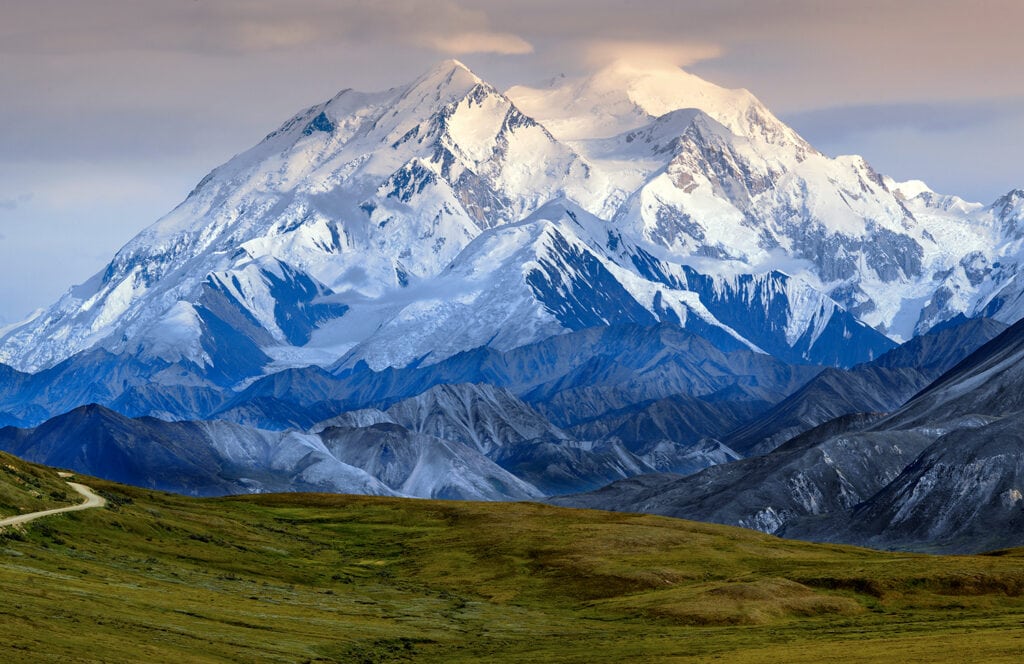
Let’s start with a basic overview of the ten highest peaks on the North American continent.
- Denali/Mount McKinley (20,310 ft/6,190 m), Alaska Range, USA
- Mount Logan (19,551 ft/5,959 m), Saint Elias Mountains, Canada
- Pico de Orizaba/Citlaltépetl (18,491 ft/5,636m), Trans-Mexican Volcanic Belt, Mexico
- Mount Saint Elias (18,009 ft/5,489 m), Saint Elias Mountains, Canada
- Popocatépetl (17,749 ft/5,410 m), Trans-Mexican Volcanic Belt, Mexico
- Mount Foraker (17,400 ft/5,304 m), Alaska Range, USA
- Mount Lucania (17,257 ft/5,260 m), Saint Elias Mountains, Canada
- Iztaccíhuatl (17,159 ft/5,230 m), Trans-Mexican Volcanic Belt, Mexico
- King Peak (16,972 ft/5,173 m), Saint Elias Mountains, Canada
- Mount Bona (16,550 ft/5,044 m), Saint Elias Mountains, USA
Note: A peak must have at least 500 meters (1640 ft) of topographic prominence to be included on this list. This means it rises at least 500 meters above its surroundings, such as a connecting ridgeline with another summit.
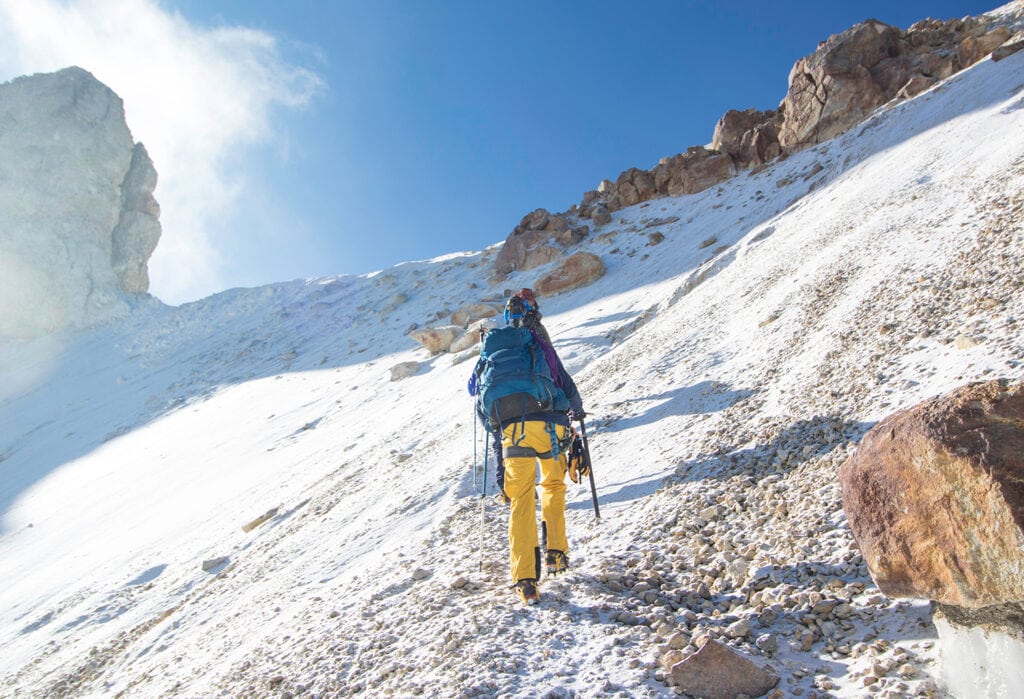
You’ll notice all these mountains are spread out between only three countries and three ranges. Three are located in the United States, three in Mexico, and four in Canada. Once we move down into Central America, the highest point is the volcano Tajumulco (13,789 ft) in Guatemala. (As you might guess, there are no high peaks in the Caribbean.)
Out of these ten mountains, the technical difficulty and conditions vary widely. The three Mexican summits are all accessible trekking peaks in the dry season, with little to no snow and almost no glacial coverage remaining today. (However, Popo is an active volcano and currently closed to trekkers.) The peaks in the Yukon and Alaska Range, meanwhile, are rugged and heavily glaciated, with notoriously violent and unpredictable weather conditions.
Ironically, the most frequently climbed peaks of these are the highest, Denali and Logan, because significant infrastructure is in place to facilitate commercial trips. Denali, in particular, is the tallest peak in North America and one of the Seven Summits, so it sees well over 1,000 attempts each year.
The Highest Peaks in Colorado
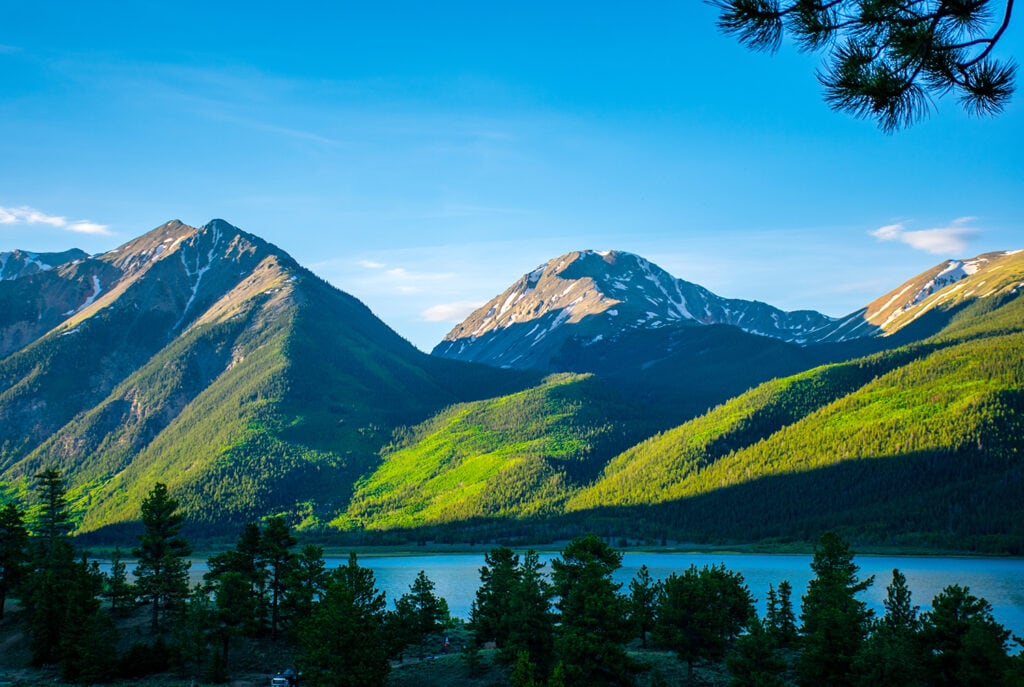
Alaska may have the continent’s highest point, but Colorado is still the mecca for climbers in the contiguous U.S. Of the 477 “major” mountain summits in the United States, Colorado lays claim to 117. Alaska has a mere 67.
In fact, there are a whopping 58 mountains rising more than 14,000 feet (4,267 meters) above sea level in Colorado. So no discussion of North American peaks would be complete without a short list of Colorado peaks. The three highest are all in the Sawatch Range, running north to south in the center of the state. These peaks are:
- Mount Elbert (14,440 ft/4,401 m)
- Mount Massive (14,428 ft/4,398 m)
- Mount Harvard (14,421 ft/4,396 m)
However, I’ve climbed all 58 14,000-foot peaks in Colorado, many several times, and these are not the most difficult or exciting mountains in the state. They are mostly long, slow hikes. We’ll go into that more below, but slightly smaller mountains like North Maroon Peak, Crestone Peak and Needle, Capitol Peak, El Diente, Mount Wilson, Little Bear Peak, Sunlight Spire, Kit Carson Peak, and Lizard Head are all much more difficult and enjoyable.
The 7 Best Peaks in North America for Climbers
1. Mount Rainier (14,417 ft/4,394 m): Best for Beginner Mountaineers

Cascades, Washington
46.8523° N, 121.7603° W
Glaciated Stratovolcano
Rainier is the most heavily glaciated peak in the contiguous United States, so it’s your best chance to dip your toes into glacier travel and “big mountain” conditions without heading up to Alaska. Most parties attempt Rainier during the summer, from May to August, but it can be climbed year-round. The normal route to the summit, the Disappointment Cleaver Route (II), takes most parties two days. Regardless of the route you choose, you’ll be traveling 10 miles and taking in over 9,000 feet of vertical gain.
Other popular routes include the Ingraham Glacier Direct (II), Emmons Glacier (II), and Liberty Ridge (IV). There are two permanent camps on the mountain, Camp Muir (10,080 ft) on the south side, and Camp Schurman (9,440 ft), on the east, each of which houses a range station and some facilities. Muir, the most popular overnight point on the Disappointment Cleaver Route, has a public hut that can accommodate up to 25 people on a first-come, first-served basis.
All parties on Rainier must register if they intend to venture above 10,000 feet or onto any glacial feature. Permits are only available in person at a Mount Rainier National Park ranger station. In addition, per the National Park Service (1), each individual must pay the Annual Climbing Fee each year (good for the entire calendar year). You can pay this BEFORE coming to the park online at Pay.gov. As of 2023, this fee is $65.
2. Longs Peak (14,259 ft/4,346 m): Best for Rock Climbers

Front Range, Colorado
40.2549° N, 105.6160° W
Rock Summit (Granite)
The crown jewel of Rocky Mountain National Park, Longs Peak is easily hiked via the popular third-class Keyhole Route (perhaps the most heavily trafficked 14er route in Colorado), but the real quality of this summit comes from its spectacular 900-foot East Face, “The Diamond,” which is home to some of the finest long rock climbs in America.
Beginning at over 13,000 feet, The Diamond is by far the highest elevation big wall in the contiguous United States. MountainProject lists 25 total climbs on its face. The most famous (and easiest) line is the seven-pitch Casual Route (2) (5.10a), which mostly features 5.7 to 5.9 leading and a crux pitch that is easily aided. Another popular line is the crack Pervertical Sanctuary (3) (5.11a), the second-easiest route up the face.
Be aware that accessing this face in the first place is no easy feat. Neither is putting down technical pitches at 13,500 feet above sea level. On approach, you’re looking at a six-mile hike (one way) and over 4,000 feet of gain. And that’s just getting to the wall.
So, familiarize yourself with Longs and its access via hikes up the Keyhole and semi-technical routes such as Kieners (5.3-5.4) Alexander’s Chimney (5.5) Stettner’s Ledges (5.7+) and the Hornsby Direct (5.8) before attempting a line on the Diamond, unless you’re going with a guide or partner who has prior experience in the area.
3. Iztaccíhuatl (17,159 ft/5,230 m): Best for Elevation Training
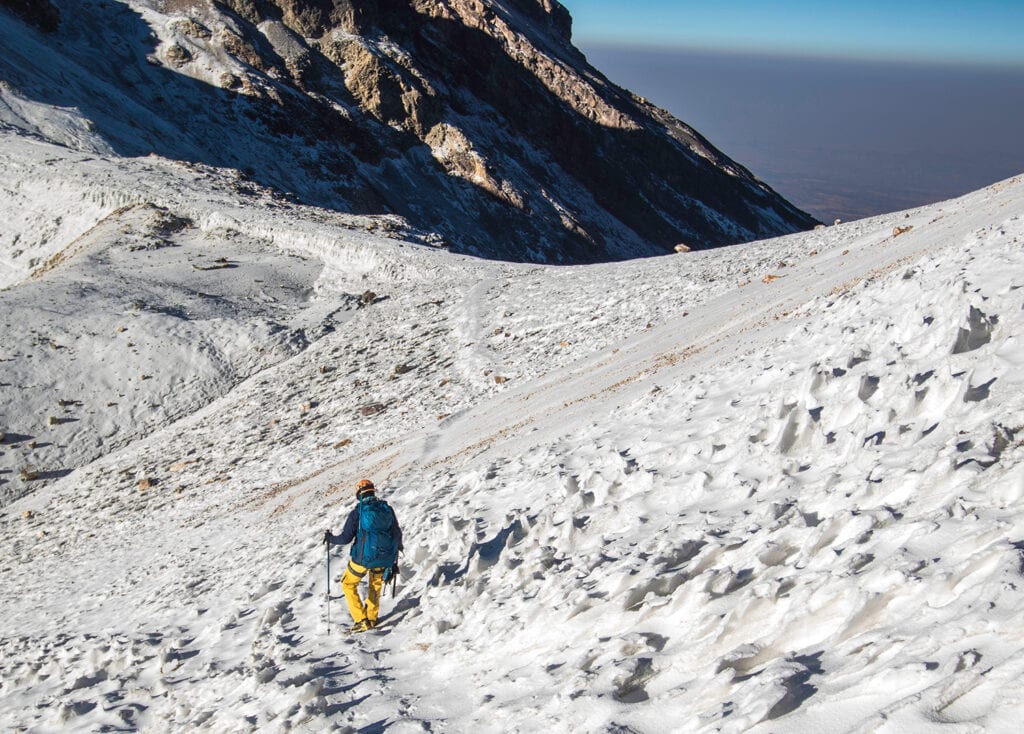
Trans-Mexican Volcanic Belt, Mexico
19.1783° N, 98.6427° W
Formerly Glaciated Stratovolcano
At 17,159 feet, Iztaccíhuatl is the ninth-highest peak in North America and the third-highest mountain in Mexico. The name Iztaccíhuatl means “white woman” in the indigenous Nahuatl dialect, refering to the fact that the mountain looks like a sleeping woman, laid on her side, with four distinct peaks representing her head, chest, knees, and feet running from north to south, respectively.
Compared to its big brothers, Pico de Orizaba and Popocatépetl, I believe “Izta” is a much more suited mountain for experience at elevation, precisely because of this unique layout. It may not be the highest summit in Mexico, but unlike Orizaba, Izta isn’t just one big cone. It’s a layered, undulating series of ridges and peaks. Reaching its highest point involves going up and down again and again, making for great training at altitude.
So, Iztaccíhuatl may be smaller than some of the other peaks on this list, but sitting just a stone’s throw from Mexico City, it’s much more accessible than Pico de Orizaba and allows for extensive time trekking and staying at high elevation. Iztaccíhuatl was once glaciated, but its glaciers are now technically “extinct” (meaning its ice is too thin to sink or to move under its own weight).
It still receives plenty of snow depending on the season though, and when I climbed it in 2018, there was more than enough snow to make it feel like a true alpine trip. Via the normal route, “La Arista del Sol” (The Ridge of the Sun) most parties take two days, stopping at the refuge at 15,300 feet to sleep. This climb takes you from the feet to the head and is a spectacular tour of one of the most majestic mountains in North America.
4. Kit Carson’s North Ridge (14,167 ft/4,318 m): Best Scramble
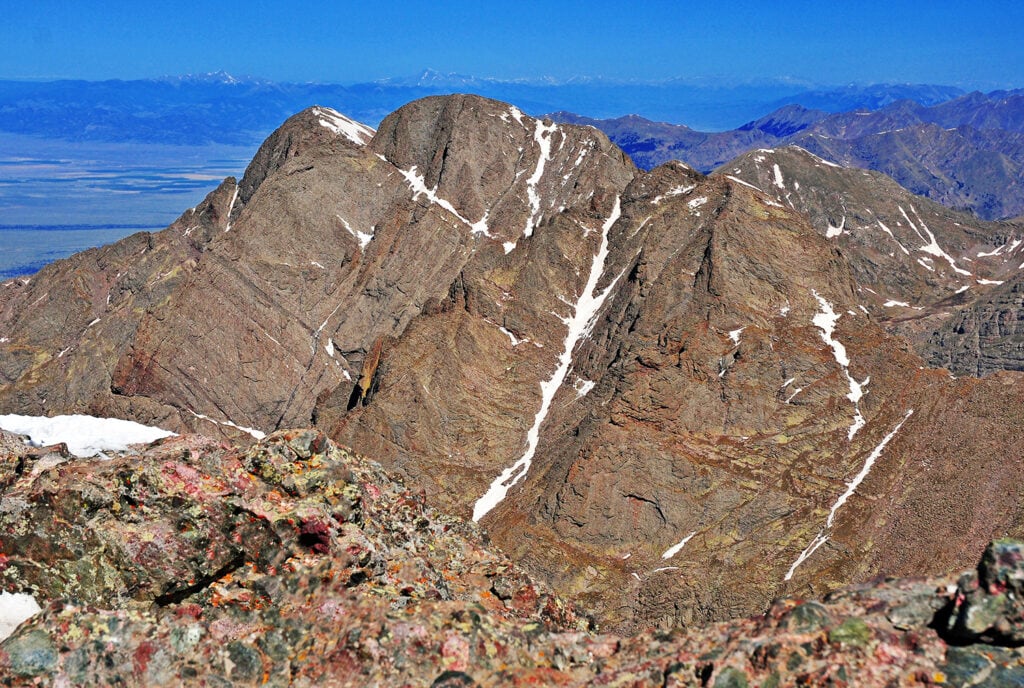
Sangre de Cristo Range, Colorado
37.9797° N, 105.6025° W
Rock Summit (Sedimentary/Crestone Conglomerate)
Nestled in the heart of the Sangre de Cristo Range of the Rocky Mountains, sits Kit Carson Peak (14,167 ft). The mountain can be summited via a Class III hike from Challenger Point (14,086 ft), hitting the mountain directly via the North Ridge (IV) is the real jewel. Simply put, this is probably my favorite scrambling line in all of Colorado, certainly on a 14er.
This airy, exposed, semi-technical route is easily done alone and without a rope by anyone who can comfortably lead low 5th-class. It turns the otherwise mellow Kit Carson Peak into something that feels like a burly objective. The climbing is sustained and exposed, but the rock is very solid. Many point to the traverse between Crestone Peak and Crestone Needle as the best route in the Sangre de Cristo Mountains, but I’d make a strong case for Carson’s North Ridge.
In total, this route entails 5,300 feet of gain and is 11.4 miles round trip. Be sure to bring bug spray! The mosquitos on the approach to Willow Lake are no joke. Like most hiking and scrambling routes on Colorado 14ers, the best resource is 14ers.com (4).
5. The Palisades (~14,000 ft/4,267 m): Best Traverse

Sierra Nevada, California
37.0980° N, 118.5176° W
Rock Summit (Granite)
The Sierra Nevada mountains are home to a plethora of world-class climbs. The Palisades Traverse, tracking across five 14,000-foot summits rimming the Palisade Glacier, is certainly one of the best. This route takes climbers to the high points of Thunderbolt Peak (14,003 ft) to Starlight Peak (14,200 ft), North Palisade (14,248 ft), Polemonium Peak (14,080 ft) and Mount Sill (14,153 ft).
This mile or so of alpine ridgeline is exposed, technical, often loose, and offers little to no bail opportunities, making for a full day of high adventure for most parties. The summit blocks on Thunderbolt and Starlight both entail 5th-class climbing, and there are several points along the traverse where parties typically rappel instead of embarking on a dangerous downclimb. Most parties take a day to pack in the eight miles to Palisade Glacier, spend the next day on the traverse, and pack out on a third day.
NOTE: The climb mentioned here is technically the “abridged” Palisades Traverse. The full traverse entails roughly 8 miles of ridgeline tracking down to Middle Palisade (14,018 ft) in the south.
6. Grand Teton (13,775 ft/4,199 m): Most Historic Summit
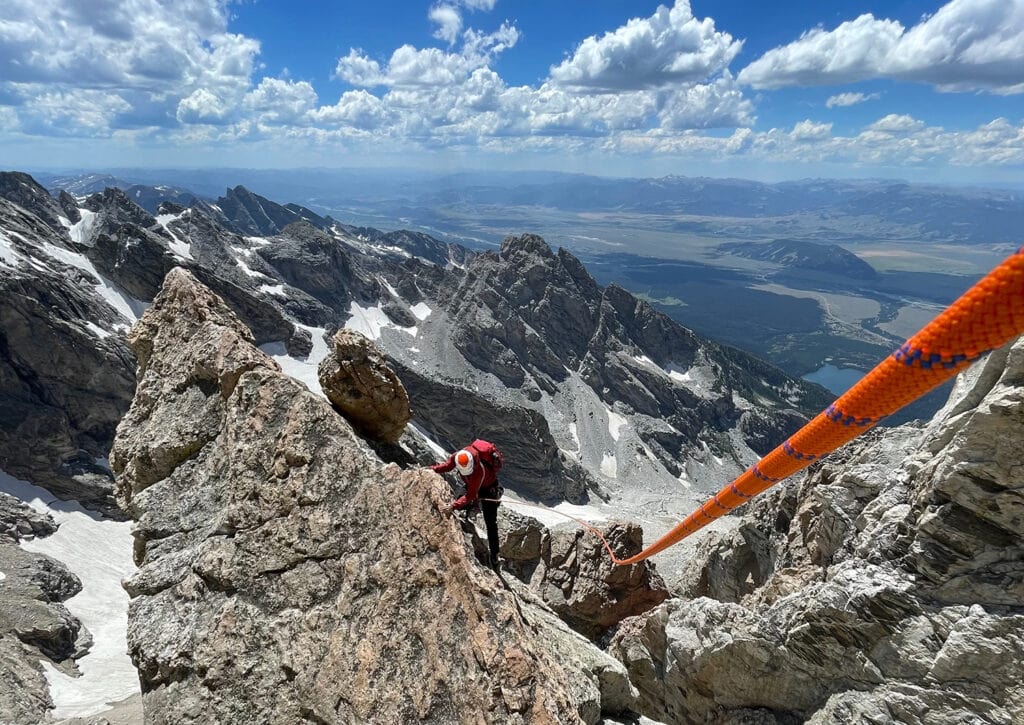
Teton Range, Wyoming
43.7904° N, 110.6818° W
Rock Summit (Granite)
Like Longs Peak, Half Dome, Mount Whitney, and Rainier, Wyoming’s Grand Teton (13,775 ft) is one of those hallmark formations in American mountaineering that you simply can’t pass up. This is a rugged, historic peak, the high point of the Teton Range, with ascents dating back to the late 1800s. After Gannett Peak (13,810 ft) the Grand Teton is the second highest peak in Wyoming. It may not hit the 14,000-foot mark, but as we’ve said earlier, the tallest mountain isn’t necessarily the best.
The “Grand” houses over stellar climbing 35 routes, some ranging up to 5.12. Even the easiest, the Owen-Spalding (5.4) and Upper Exum Ridge (5.5) require a few pitches of 5th-class climbing, so this is no “hike,” although its common for parties to free solo both these routes, which saves a lot of time. You can learn more on the Grand Teton’s Mountain Project (5) page.
7. Mount Hunter/Begguya (14,573 ft/4,442 m): Best Hard Objective
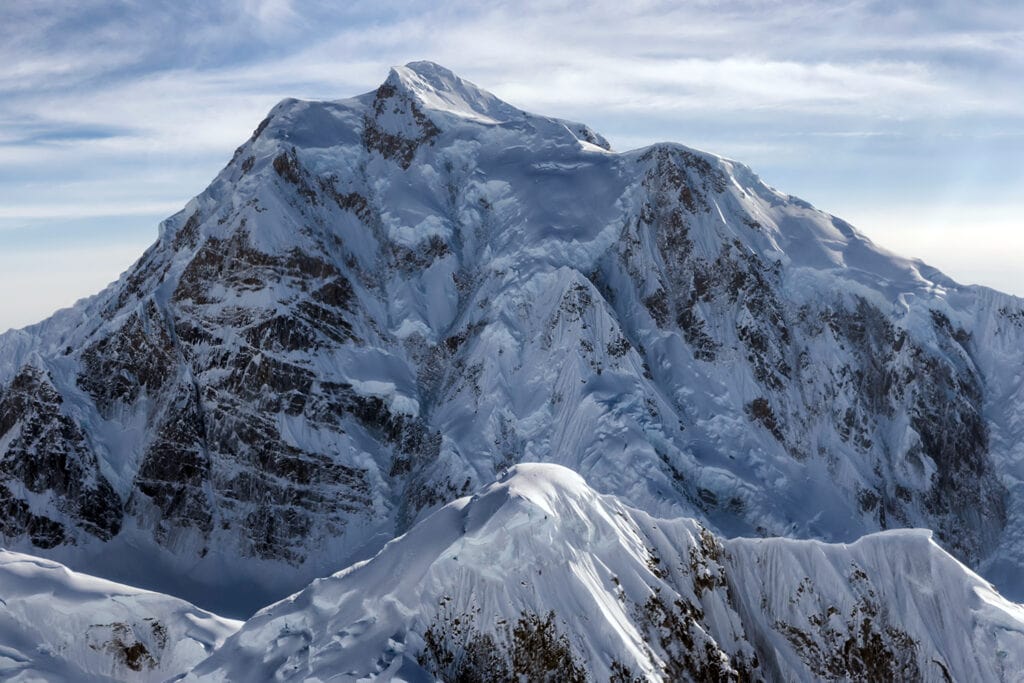
Alaska Range, Alaska
62.9508° N, 151.0894° W
Glaciated Mountain
The goal of this list is to give newer climbers or beginner mountaineers an overview of some worthy objectives in North America. If you’re skilled and experienced enough to be attempting difficult technical routes on big peaks in Alaska or Canada, then you probably aren’t on your laptop trawling Climbing House for recommendations. There are dozens of hard objectives up there, and it all comes down to the route you choose.
But if we’re going by the high peaks, Mount Hunter or Begguya (“Denali’s Child” in the indigenous Dena’ina language) is the steepest, most technically difficult summit of the three highest mountains in the Alaska Range (Denali and Mount Foraker being the other two). It’s also by far the hardest 14,000-foot peak on the continent. According to the Alaska Mountaineering School (6), only 40% of those who attempt Begguya reach the summit.
Soaring above the Kahiltna Glacier, Begguya is home to a number of world-famous routes, notably the Lowe-Kennedy line (Greg Lowe and Michael Kennedy) on the north face in 1977, and later Mugs Stump and Paul Aubry’s Moonflower Buttress (5.8 A3 AI6) and Greg Child and Michael Kennedy’s Wall of Shadows (5.9 A4 AI6+).
References
Climbing – Mount Rainier National Park
National Park Service (retrieved on 09/14/2023)
https://www.nps.gov/mora/planyourvisit/climbing.htm
Casual Route
Mountain Project (retrieved on 09/14/2023)
https://www.mountainproject.com/route/105748496/casual-route
Pervertical Sanctuary
Mountain Project (retrieved on 09/14/2023)
https://www.mountainproject.com/route/105748939/pervertical-sanctuary
Kit Carson Peak – 14,167 Feet
14ers (retrieved on 09/14/2023)
https://www.14ers.com/peaks/10023/kit-carson-peak
Grand Teton Rock Climbing
Mountain Project (retrieved on 09/14/2023)
https://www.mountainproject.com/area/105803123/grand-teton
Mt. Hunter
Climb Alaska (retrieved on 09/14/2023)
https://climbalaska.org/climbs-denali-more/mount-hunter-guided-climb/
